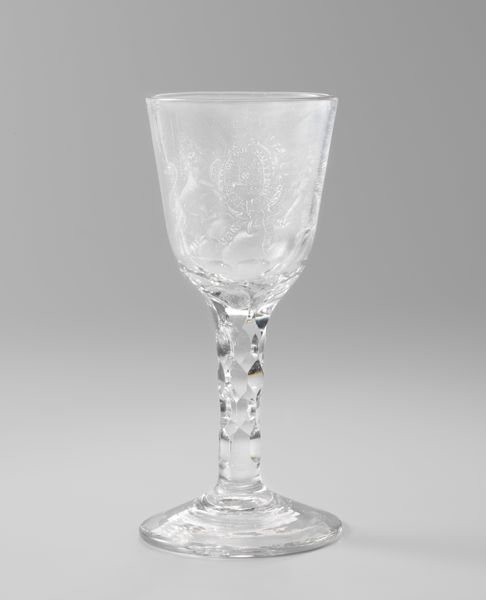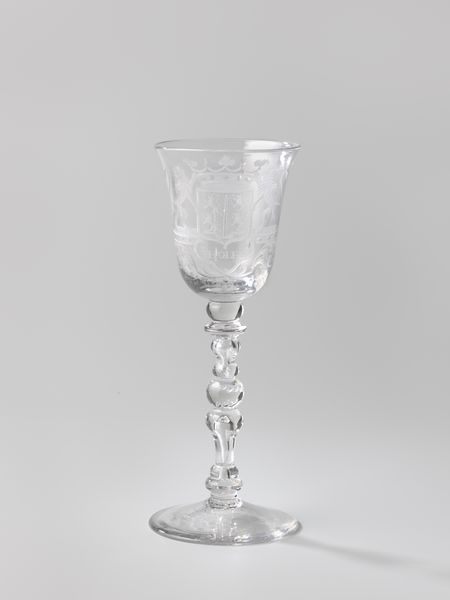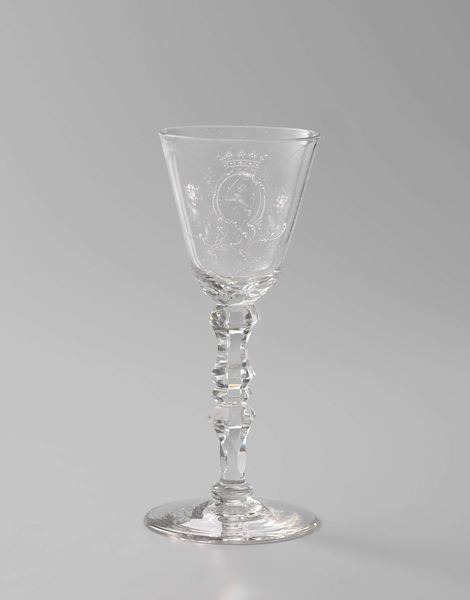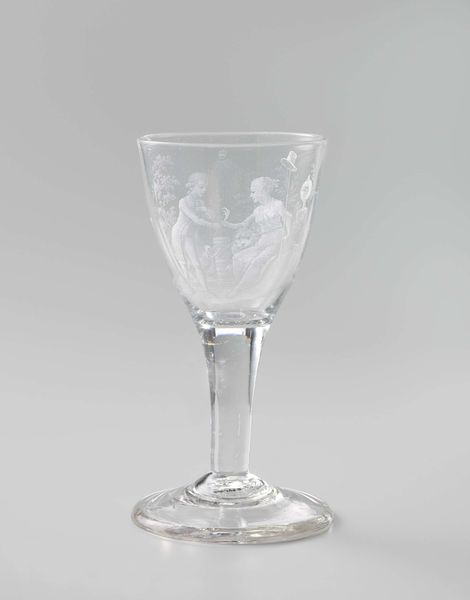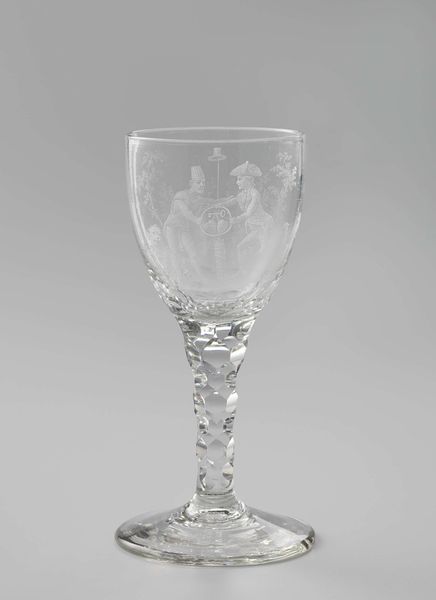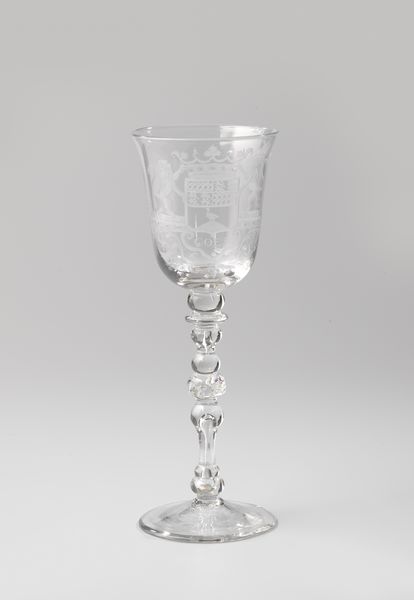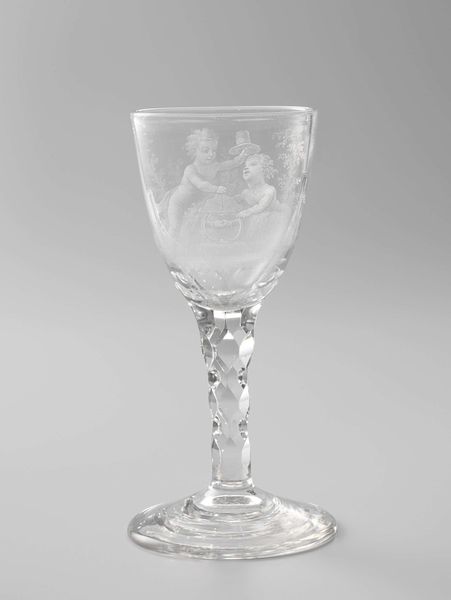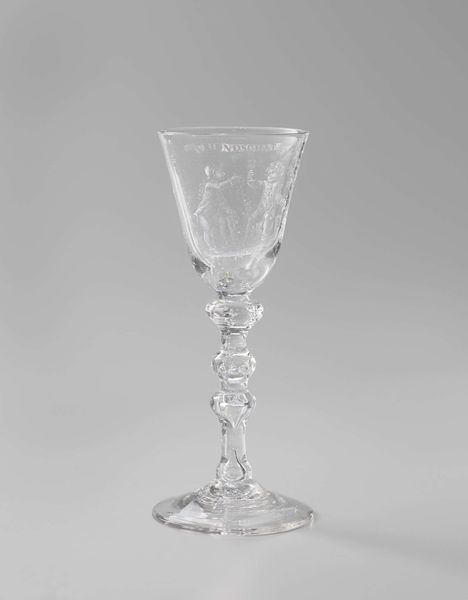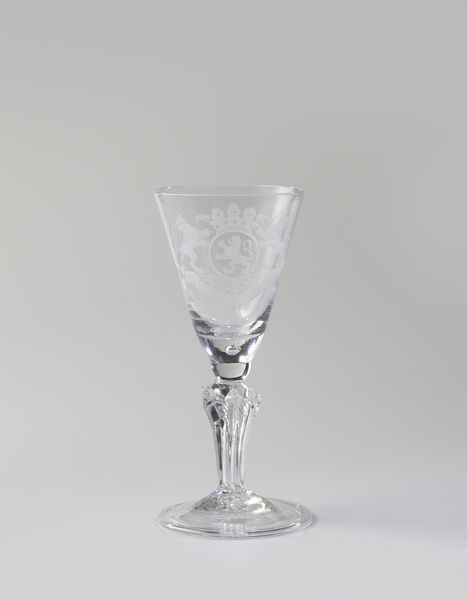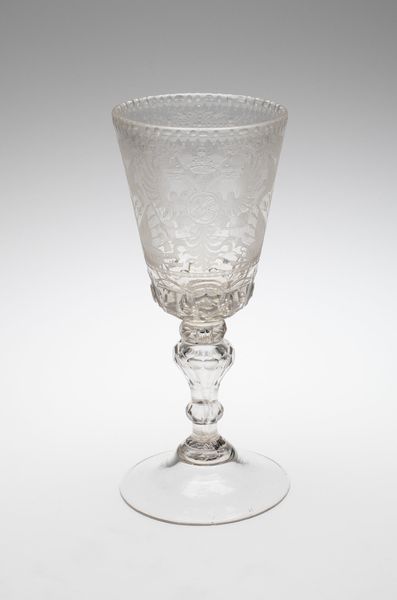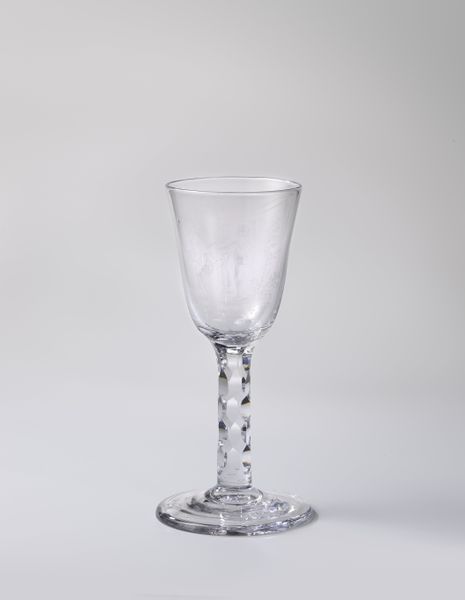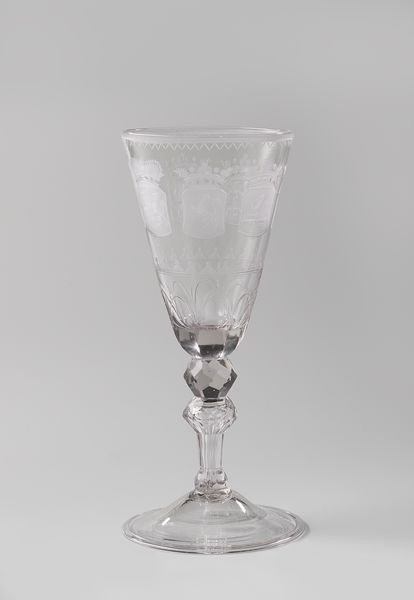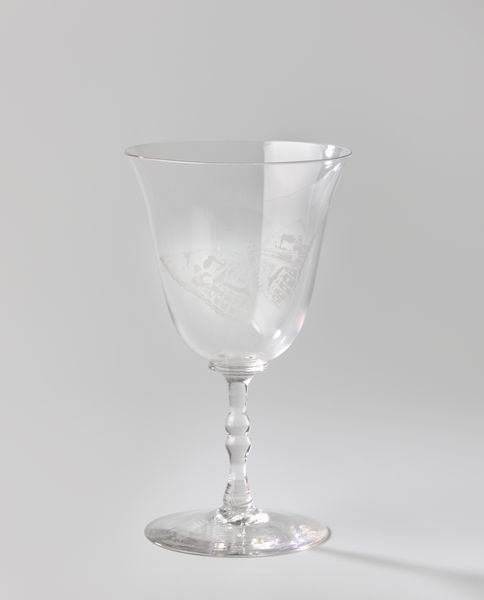
glass, engraving
#
portrait
#
neoclacissism
#
dutch-golden-age
#
glass
#
engraving
Dimensions: height 17.7 cm, diameter cm
Copyright: Rijks Museum: Open Domain
This goblet with the portrait of Betje Wolff was made by David Wolff in the 18th century. It's an engraved glass that connects to a fascinating moment in Dutch history. Betje Wolff, depicted here, was a well-known writer who challenged the social norms of her time. In 18th century Netherlands, the rise of literacy and print culture created a space for female writers like Wolff to express their opinions on subjects ranging from politics to religion. This goblet serves as a symbol of the cultural significance of these literary figures and the power of art and craft to celebrate their lives. By placing Wolff’s image on a goblet, Wolff’s work is elevated. To fully understand its significance, we might look into the history of glass engraving in the Netherlands, the role of women in 18th-century Dutch society, and the writings of Betje Wolff herself. This goblet serves as a reminder that art is always rooted in a particular time, place, and set of social relations.
Comments
rijksmuseum about 2 years ago
⋮
The portrait is done by means of stippling. A scriber was used to mark the glass with tiny dots. Dots placed further apart produce a darker hue, while those placed closer together yield lighter shades. On the back, the engraver included his own name and that of the patron: WOLF STIPTE DEES BEELDNIS OP HEINSIUS LAST (Wolf stippled this likeness at Heinsius’ request).
Join the conversation
Join millions of artists and users on Artera today and experience the ultimate creative platform.
